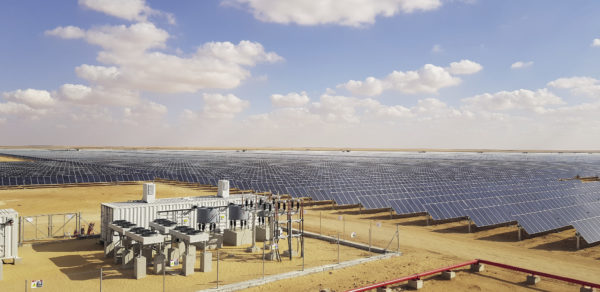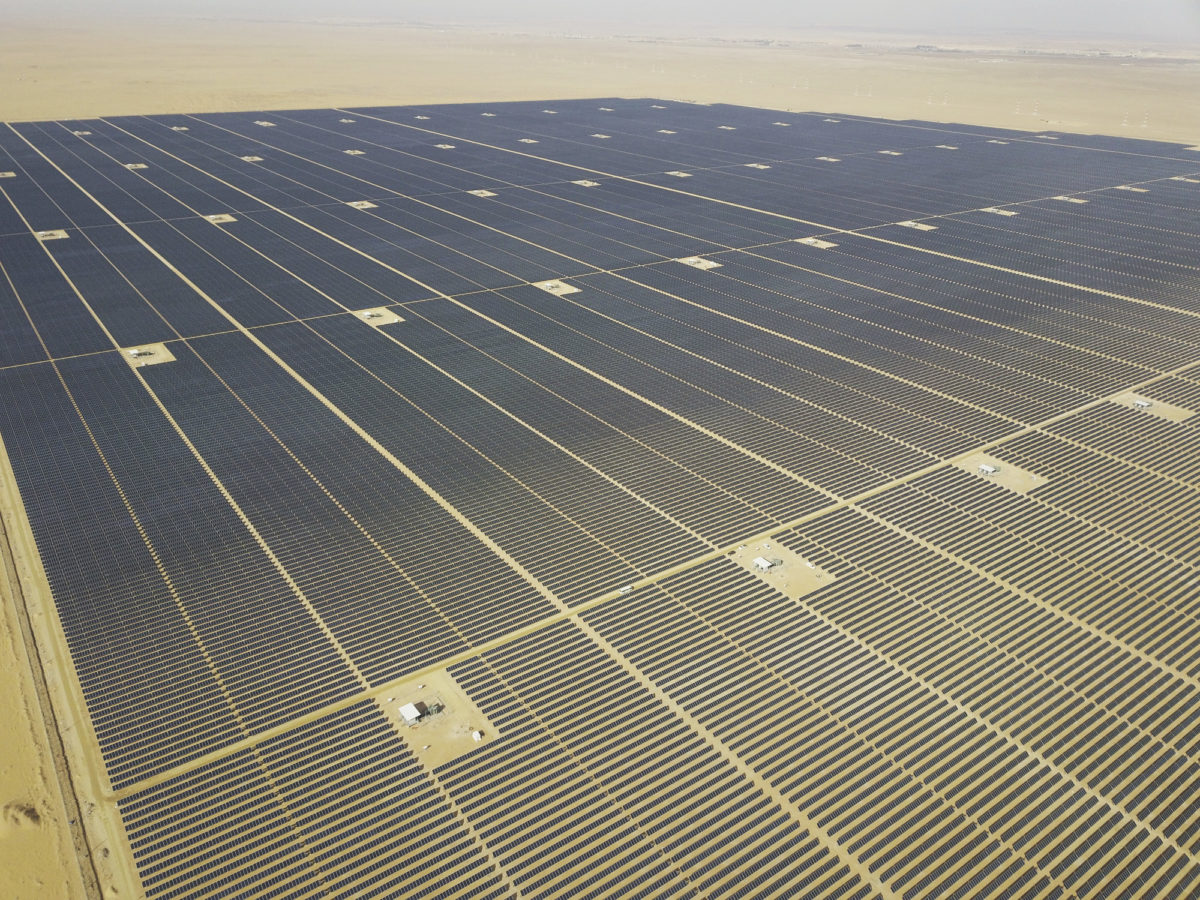ACWA Power launched the first solar project under the Kingdom’s ambitious Vision 2030 program, which will set the scene for Saudi Arabia’s renewable plans. Project development moved quickly, with construction starting in November 2018 and panels that began generating electricity in November 2019. ACWA Power is committed to developing PV capacity in its home base of Saudi Arabia with a goal to develop PV at the lowest possible cost.
Tech considerations
According to the tender rules, Saudi Arabia’s first large-scale PV plant came with a 30% quota of locally manufactured PV components. Sakaka Solar Energy Co. explained that this meant that 30% of a project’s budget needed to be spent on local contractors and domestically manufactured PV components while employing Saudi nationals. The groundbreaking $320 million (SAR 1.2 billion), 300 MW Sakaka project featured around 1.2 million modules supplied by Astronergy.
SVG support
While most people initially think of modules and inverters when discussing solar PV installation components, Static VAR Generators (SVGs) are a more frequently used apparatus for developing massive energy plants of Sakaka’s scale to support efficiency and interaction with the utility grid. SVGs can provide rapid, continuous capacitive and inductive reactive power to realize reactive power and voltage control. This helps to ensure the stability, safety, and economic operation of power grids, while also improving the connection point between load and the public power grid.
In the case of the Sakaka project, the contractor selected China’s TBEA to supply the PV park with 75MVar (40MVar+35MVar) water-cooling SVG, to be utilized for reactive power compensation. The high-voltage SVG is a static synchronous compensator based on an IGBT chain converter that develops the direction of reactive power compensation technology in an AC power network. This has provided two major benefits to Saudi Arabia’s famed PV installation. First, water cooling cools the power electronics within the SVG container. Second, the TBEA equipment meets the solar farm’s reactive power compensation requirements. The solar plant equipment absorbs and generates reactive power to stabilize voltage and comply with the voltage limitations defined by the country’s grid code.
“The KSA transmission network has requirements on the additional reactive power within 20ms control response time,” explained Mr. Yang, a product solution manager for TBEA. “The fast response-ability can comprehensively improve the power output quality for the Sakaka project.”
When selecting suppliers for the Sakaka PV farm, the contractor weighted in several parameters prior to selecting TBEA as its SVG solution provider, in line with the rules applying to all projects. These included having previous project experience of specific capacity, compliance with international safety and quality standards, and cost-competitiveness, of course. But what made the difference was the company’s delivery times and adherence to deadlines, despite the challenging timeline for the Sakaka project.

Photo: Sakaka Solar Energy Co.
So far, the decision has paid off. Since the solar farm came online, ACWA Power has experienced smooth operation and has not faced any major issues with TBEA’s cooling process. ACWA Power says that following the project’s commissioning, the TBEA team has constantly been available for questions and inquiries, with the after-sales service running smoothly.
ACWA Power’s senior management team was particularly happy with TBEA’s installation services. He says that the TBEA team came at the end of the construction period, when most projects tend to be at a very busy phase and there are usually many challenges to deal with. But TBEA’s employees were fully collaborative, supportive, and adaptive to the Sakaka project.
Lay of the land
Sakaka Solar Energy noted that one of the smoothest aspects of the project was logistics. Saudi Arabia’s good infrastructure – including ports and roads – aided the project’s rapid development. This is a crucial factor when considering the country’s future PV development.
ACWA Power stated that the environmental considerations for Saudi Arabia’s first utility-scale solar PV plant were the same as most outdoor construction sites in the country. But the environmental variance in Saudi Arabia is similar to many parts of the world. The most specific factor for the PV farm was the design temperature, as there was a requirement for the project’s temperature to vary from 50 C to -5 C. The project also needed to be able to withstand the dusty conditions of the region.
The new PV power plant came online in November 2019, with the TBEA SVG commissioned in December. Performance during the first few months of operation has been smooth and has met expectations, making for a crowning project in the Kingdom, indeed.
This content is protected by copyright and may not be reused. If you want to cooperate with us and would like to reuse some of our content, please contact: editors@pv-magazine.com.
